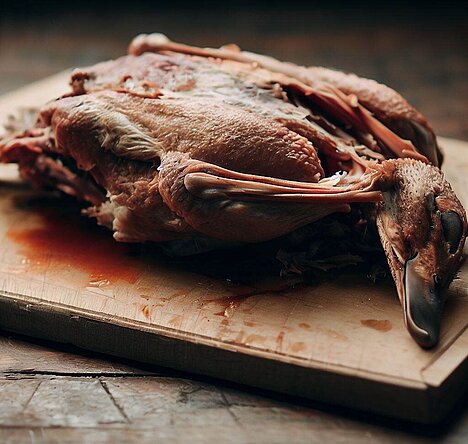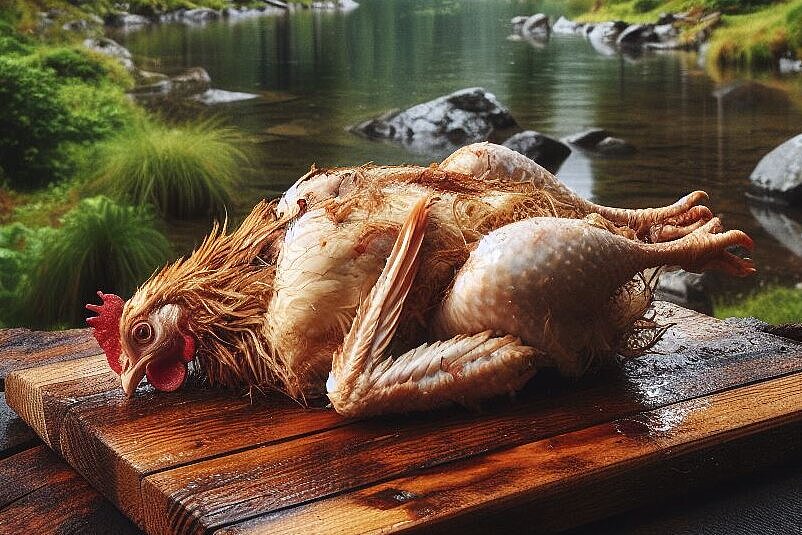Duck carcass

What is duck carcass?
Duck carcass is the carcass of a duck from which the breasts and thighs have been removed. It consists of bones, cartilage, meat, skin and fat. Duck carcass is a natural source of calcium, which is important for the development of your dog's bones and teeth. It also provides energy, protein, fat and other nutrients your dog needs.
How do I feed duck carcass?
You can feed duck carcass either whole or shredded. If you feed the whole carcass, you should make sure that your dog chews it well and does not swallow it to avoid injury or blockages. If you feed the shredded carcass, you can mix it with other ingredients such as vegetables, fruit or oils to create a balanced meal. The amount of carcass depends on the size, age and activity level of your dog. As a rule of thumb, bones should make up about 10 to 15 percent of your dog's daily requirement.
What are the benefits of duck carcass?
Duck carcass has several benefits for your dog's health. For example
- It strengthens your dog's bones and teeth by providing natural calcium.
- It aids your dog's digestion as it contains fiber and enzymes.
- It supports the health of your dog's skin and coat by providing essential fatty acids.
- It stimulates your dog's natural chewing behavior, which reduces stress and promotes teeth cleaning.
What are the disadvantages of duck meat?
Duck carcass also has some disadvantages that you should consider. For example
- It can lead to obesity if you feed too much of it, as it is relatively high in fat.
- It can lead to diarrhea or constipation if you eat too little or too much of it, as it affects bowel movements.
- It can lead to allergies or intolerances if your dog is sensitive to poultry.
- It can lead to injuries or infections if you do not store or feed it hygienically, as it is raw.
Duck carcass is a popular ingredient in your dog's BARF diet and has many health benefits. However, you should also be aware of the disadvantages and pay attention to the right quantity and quality.
If you notice any signs of hypersensitivity or poisoning in your dog, you should see your vet immediately. We are not a substitute for a vet, but we try to be as accurate as possible. Every dog reacts differently and we recommend you get a second opinion or consult your vet if in doubt.
Stay healthy and take good care of your four-legged friend!😊
Similar to Duck carcass
Chicken carcass is what remains of the chicken after it has been gutted and cut up. It consists of bones, cartilage, skin and meat scraps. Chicken carcass is a popular BARF product as it is a...
Turkey carcasses are the bones and meat that remain after a turkey has been gutted and carved. They usually still contain some skin, fat, cartilage and tendons. Turkey carcasses are often considered...
Goose carcass is a by-product of goose farming and consists of the bones, skin, wings and neck of the goose. It has a high bone content, which gives the sauce a good taste. Goose carcass can be...
Quail carcass refers to the bones of the quail, including adherent remnants of meat and cartilage that remain after most of the meat has been removed. Quail carcasses are generally smaller and more...



